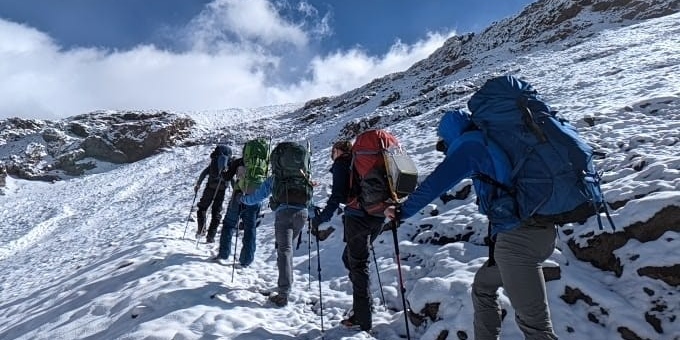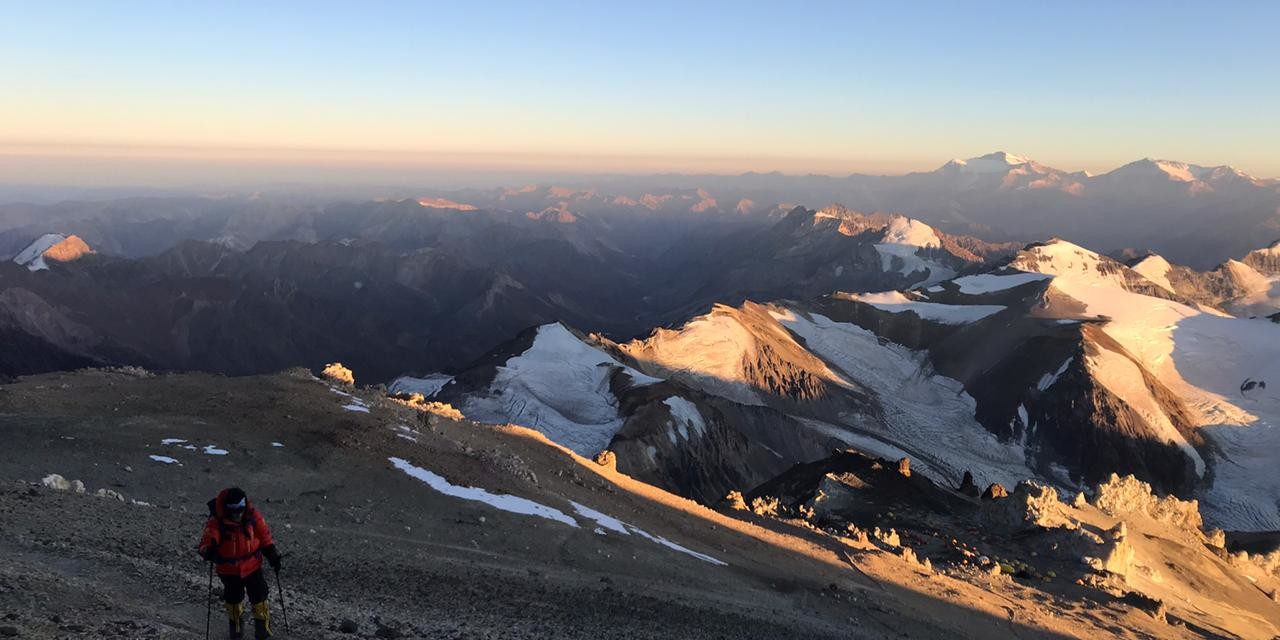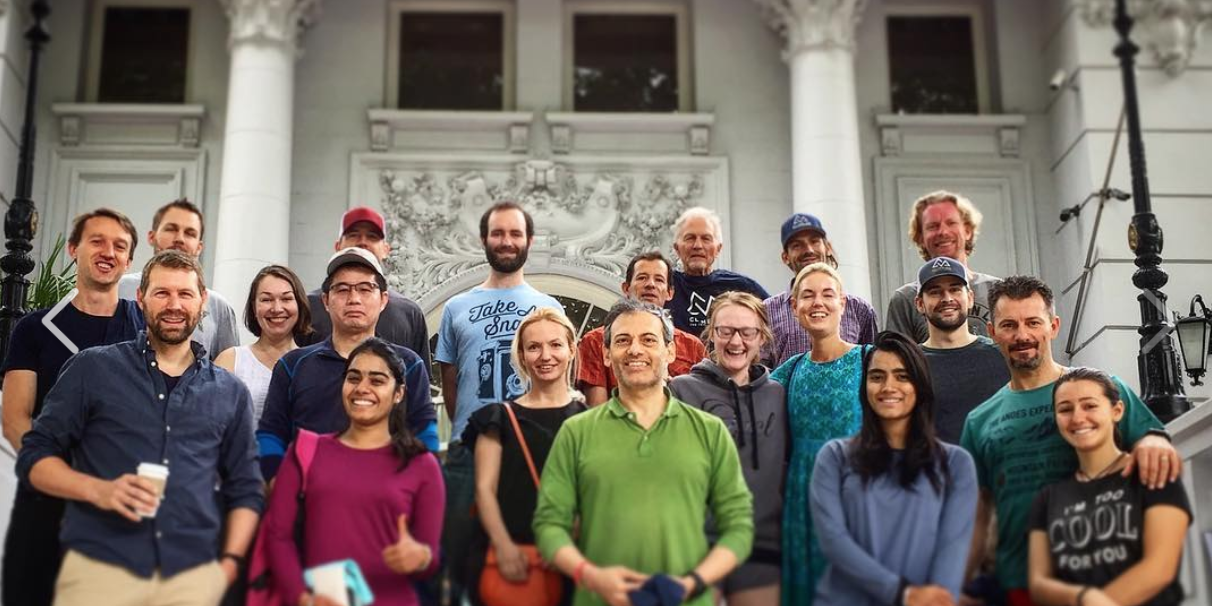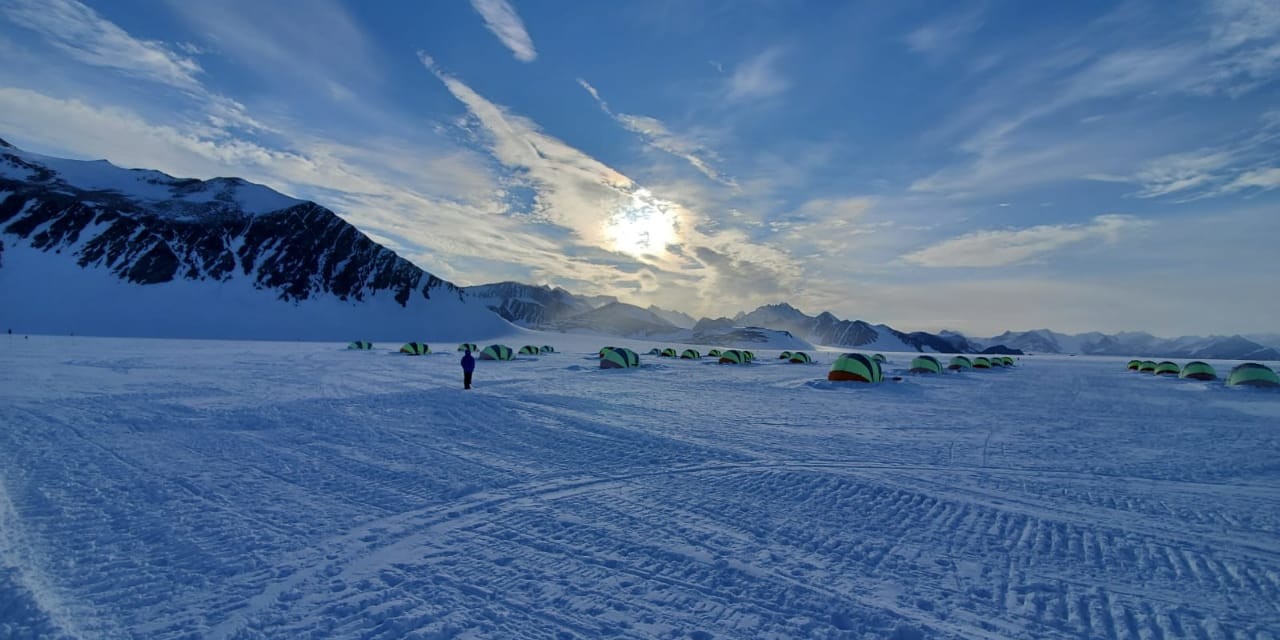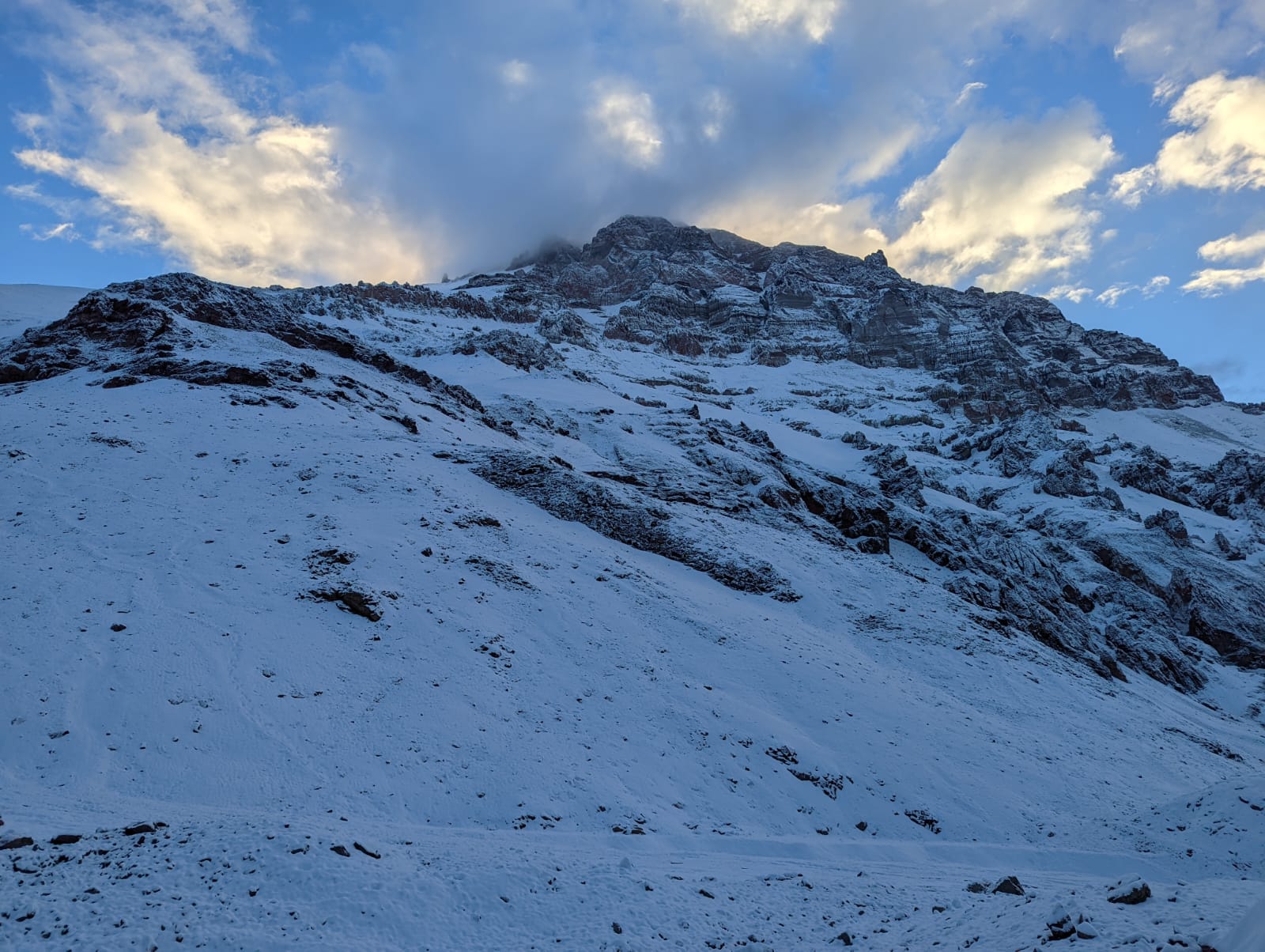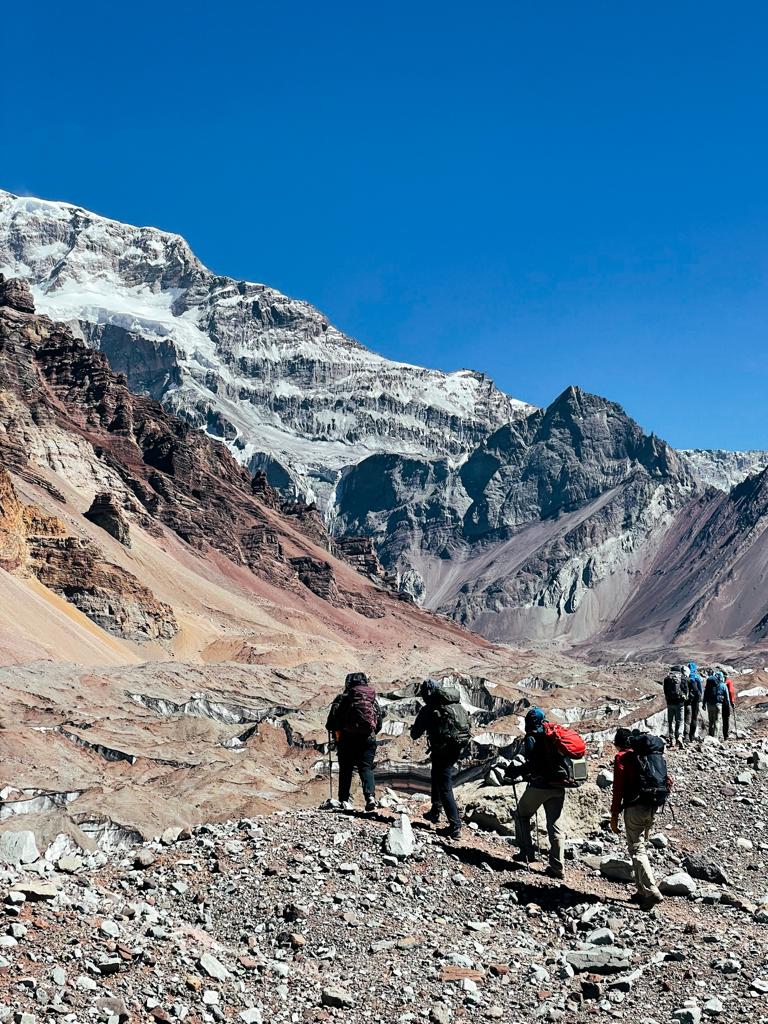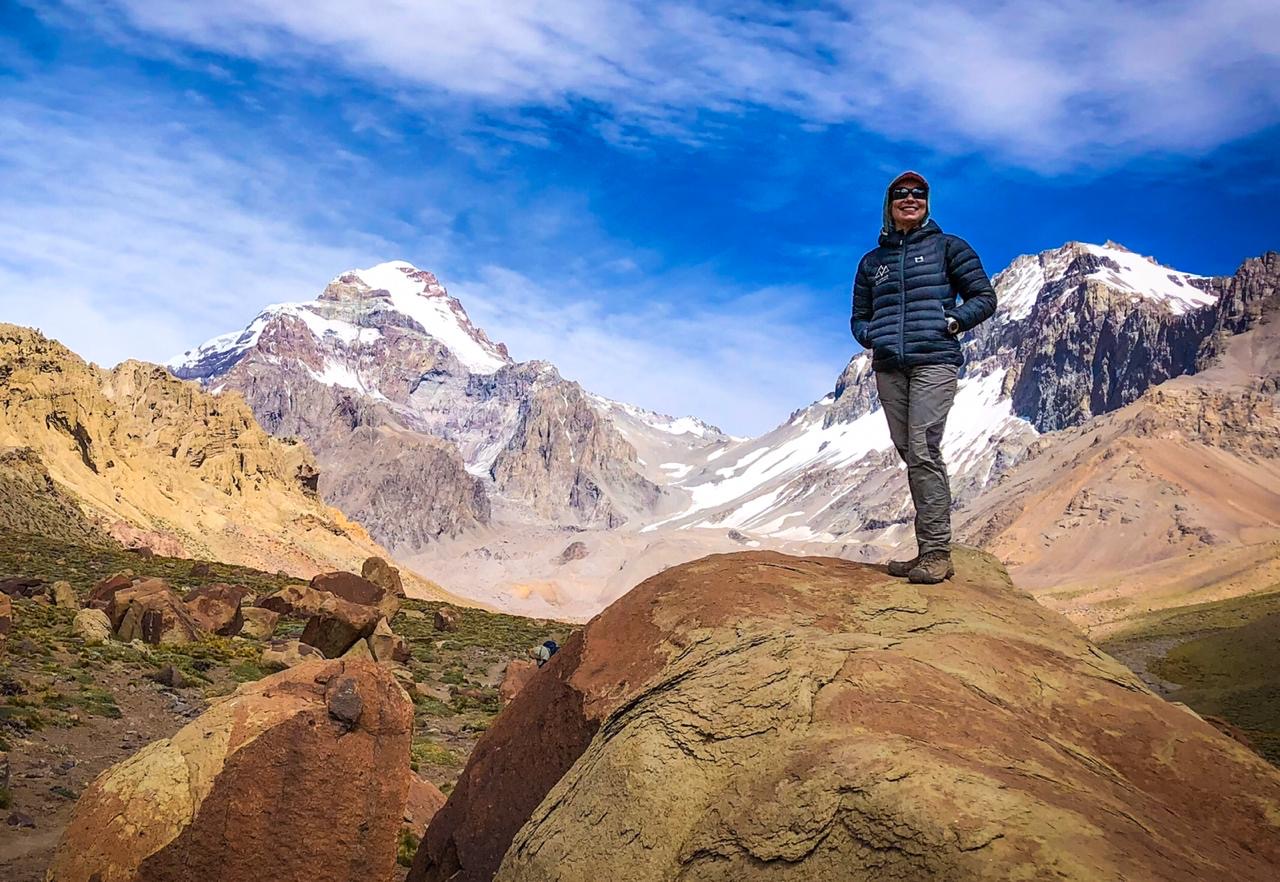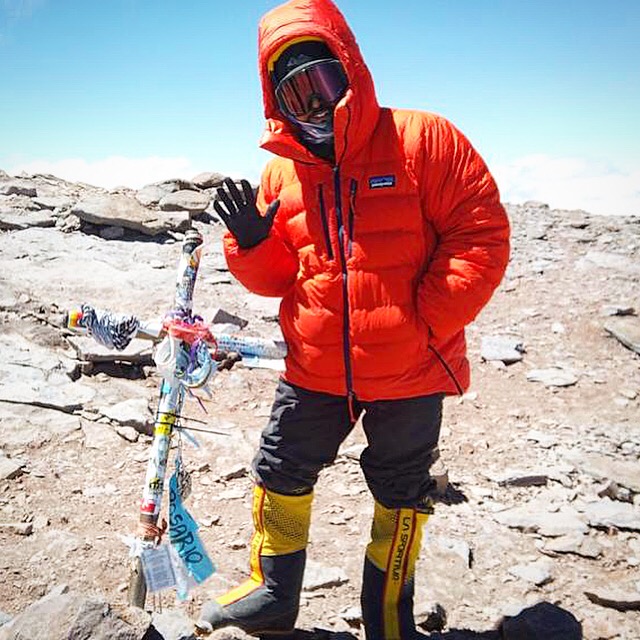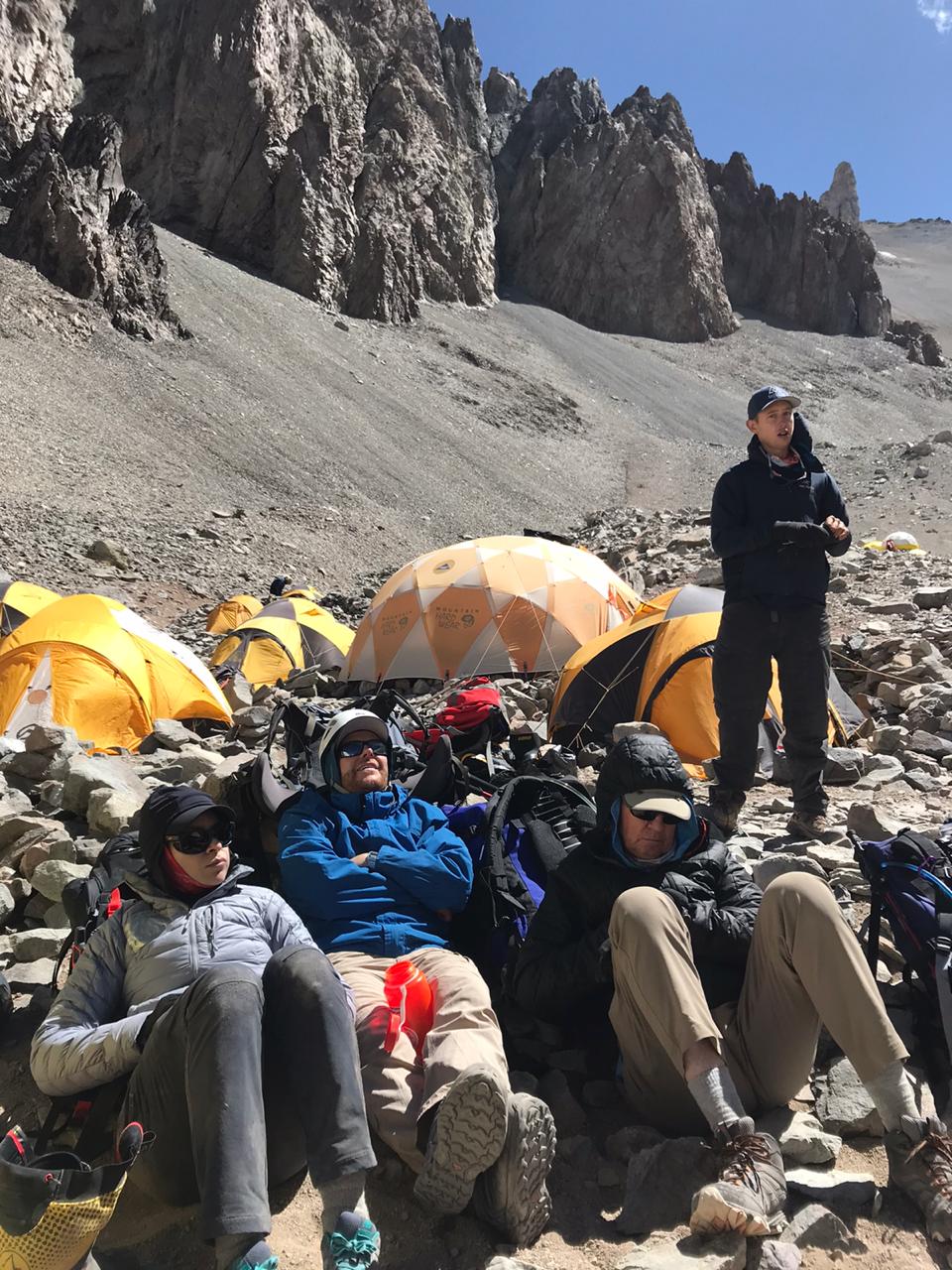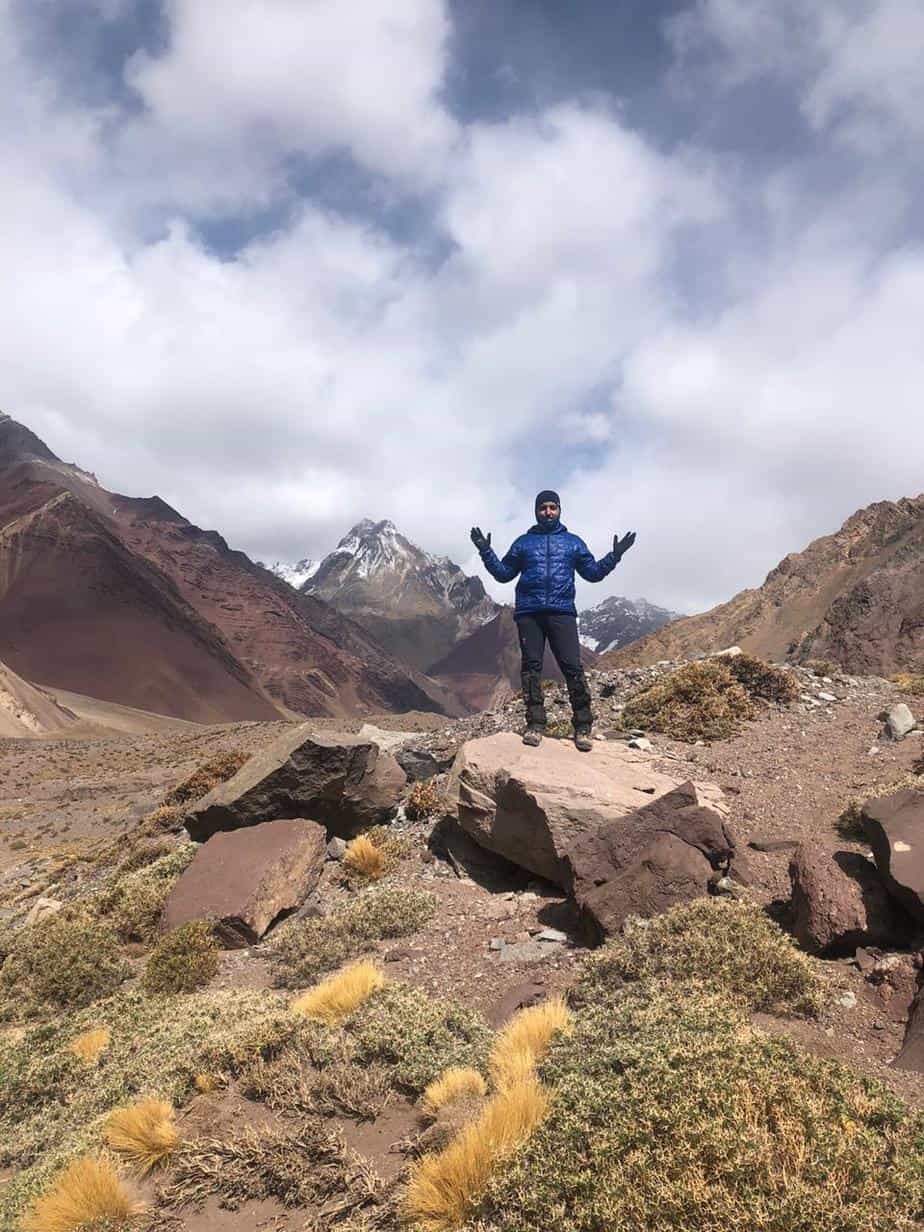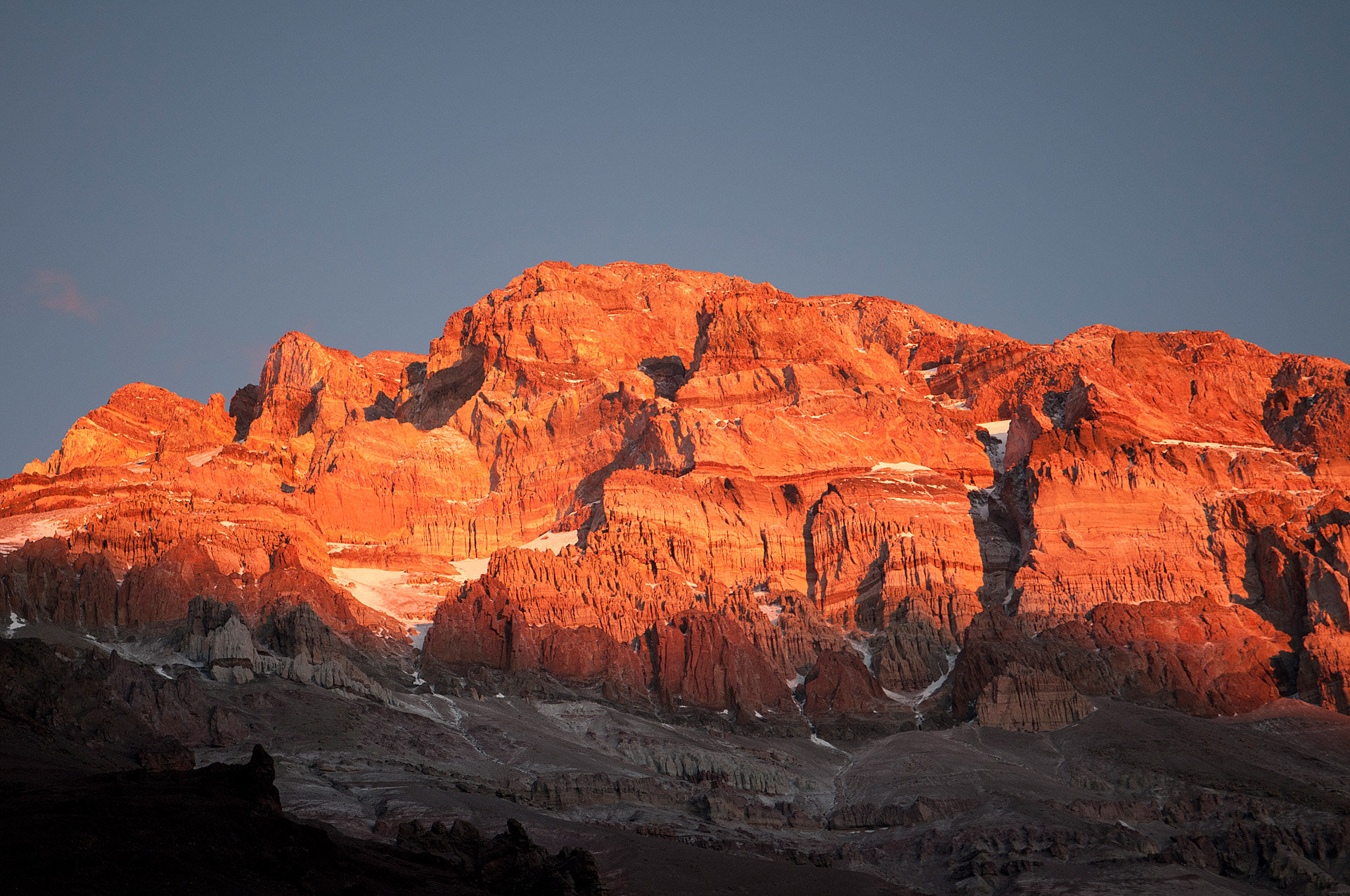ACONCAGUA | South America
Price Range:
$8,495 USD
Elevation:
6,962m / 22,841ft
Duration:
15-21 Days
Difficulty:
Intermediate
Route:
False Polish Traverse
Share Expedition
Aconcagua is a mighty peak, proud climb and an unforgettable experience.
Standing 22,841 feet (6,962 meters) tall, Aconcagua is the second highest of the Seven Summits, the tallest peak in the world outside the Himalaya and the apex of both the Southern and Western Hemispheres.
A true test for any mountaineer, Aconcagua sits along the Andes spine roughly equal distance between the stunning South American towns of Mendoza, Argentina and Santiago, Chile. The mountain is a predominately arid, hot climate making for stable summer climbing with some snow and cramponing high on the peak.
Not to be underestimated, Aconcagua’s altitude, elevation gains and load carries make it a physical challenge similar to Denali, an amazing accomplishment for even the seasoned mountaineer.

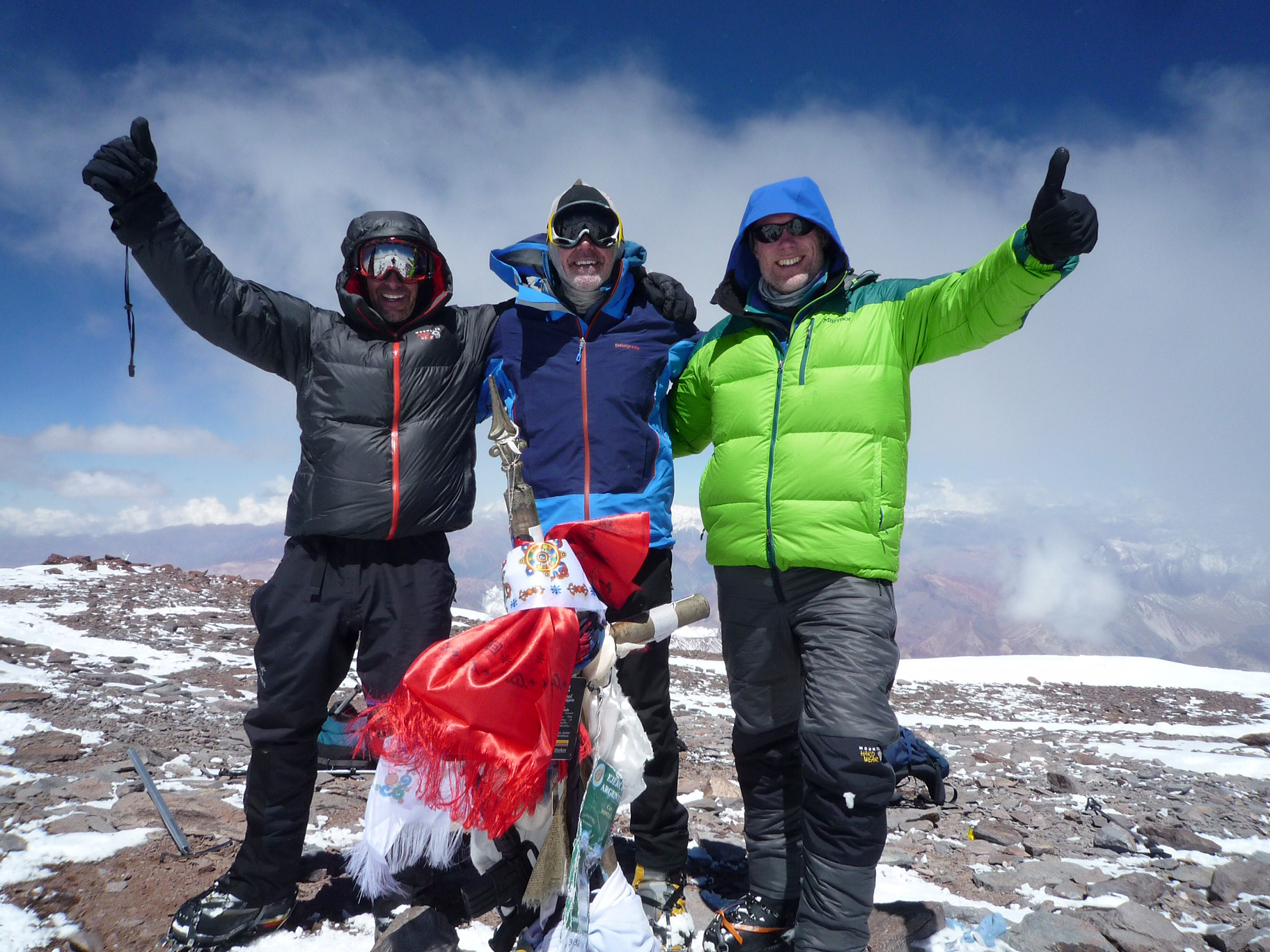
Expedition Highlights:
- Stand on the highest summit in the Southern and Western Hemispheres.
- Traverse the entire peak and see both sides of the mountain.
- Join our arrieros (mule drivers) while they cook the traditional meal “asado” (BBQ meats, veggies, bread, and, of course, Argentinian wine) over an open fire and under the stars.
- Watch the shadow of Aconcagua grow larger as the sun rises over the Andes on summit morning.
- Test yourself at altitude as critical preparation for Denali and Everest.
- Look down from the summit ridge on the mighty South Face, climbed by Reinhold Messner.
- Check out our Aconcagua Interactive Itinerary for more highlights
- Get the inside scoop of the Roof of the Americas on our Aconcagua Top Five blog post
Choosing the Right Option
Our Aconcagua climbs are run annually from mid-December through the end of February to take advantage of the best weather, favorable summit conditions, and strong on-mountain infrastructure. It is a fantastic expedition which is highly adaptable to fit your style and timeframe.
Choose from our ever popular “Aconcagua 360 Classic” for a time tested climb schedule, upgrade to the “Executive” option for increased support or look at our “Speed Ascent” options if time is a critical factor.
Porter Support Add-On
$2,150 USD
Many clients choose to use porters to facilitate their ascent of Aconcagua giving them a higher chance of success and making their climb much more enjoyable.
The trip price includes the cost of mules to transport the group’s gear into base camp, but not porters above base camp. Unlike on other mountains, porters on Aconcagua work for the on-mountain logistics companies rather than being attached directly to a particular expedition. If you would like a porter to assist in carrying your personal gear and share of the group gear, you may either hire them on an ad hoc basis during the climb or arrange their services in advance.
Please note, it is less expensive to hire porters on the mountain than to arrange them in advance. If hiring porters on an ad hoc basis, all payments must be made in cash with US dollars on the day of the service provided. Booking ahead of time guarantees availability and eliminates the need to carry this large amount of cash during the climb.
A standard porter load is 20kg and charged at a flat rate up to that maximum weight (i.e., if you only have 17kg, you will still be charged the 20kg rate). Additional weight will be charged at a pro-rated amount per kilogram. It is important to note that using a porter will still leave you with some gear to carry. However, your pack will be closed to 10-14kg rather than 20-25kg for each carry and move.
If you want to make your climb easier, or you simply want to enjoy the climb more, hiring porters may be the right decision.
Single Rooming Supplement
$1,250 USD
We are happy to organize single rooming accommodations in our hotels in Mendoza and Puente del Inca for you.
Having a single room helps climbers stay healthy and adds a bit of comfort and personal space that can go a long way on an expedition. If you would like a single rooming option, please let us know.
Please note that all tent accommodations are double-occupancy for weight, safety, and warmth.
Helicopter Exit - Plaza de Mulas to Horcones
Inquire for seasonal pricing
A helicopter exit from Plaza de Mulas to Horcones will save you the 18-mile hike back to the park entrance at the end of your climb. Because your date arriving into base camp can change and weather can prevent flights, helicopter exits will be scheduled upon your arrival, usually for later that same afternoon or the next morning. The helicopter operators accept only cash, in US dollars, on the mountain and require payment before departure from Plaza de Mulas. Pre-booking before your trip will help limit to amount of cash you need to carry throughout the expedition.
Will I be sharing a tent?
Yes, both at base camp and on the mountain. Tents are always shared on Aconcagua for safety at altitude, warmth, limited tent space on the mountain, and to reduce group gear weight for everyone. Please plan to share a tent with one of your fellow climbers and pack some earplugs!
How heavy will my pack be?
In general, climbing packs on Aconcagua are moderately to quite heavy. You will likely be carrying 45lbs – 55lbs (20kg – 25kg) most of the time while climbing on the mountain and less on the trek into base camp, during which we are supported by mules. On the trek in, you only need to carry what you need for the trek that day, which is generally only 15lbs (7kg).
If you are concerned about the heavy loads, please consider the option of hiring porters.
Will I need to purchase insurance?
Yes. Trip delay and cancellation, rescue, repatriation, and medical insurance are mandatory for this program for your own benefit. We have seen too many times people need to cancel their trip either before or during the expedition for reasons such as injury, health, family, or business matters. With such a long trip and so much at stake, climbers need to be prepared for contingencies.
The Aconcagua Provincial Park authorities also require each climber to carry insurance, which covers high-altitude activities, climbing, search and rescue, and evacuation. Please contact us if you need assistance finding an appropriate policy.
What is the food like on the climb?
In general, our food on and off the mountain is excellent. Mendoza is known for its food and wine. En route to base camp, we will be eating “asado,” traditional Argentinean BBQ over an open fire that the muleteers make for us (vegetarian options are available). At base camp, we have hired the services of first-rate chefs. On the mountain, your guides will be cooking large, hearty meals that are tasty, albeit a bit more rustic than in town. We can cater to most dietary requirements if given sufficient notice, so please let us know if you require accommodation.
What extra gear do I need for the traverse?
You will need light shoes that double as camp booties to bring up and over the mountain with you, and for the long hike out of base camp, the final day. Please also consider how you will carry your ‘day pack gear’ on the hike out. Many people use the top of their pack, which is usually detachable and can turn into a hip belt, which is ideal. If not, please bring an ultra-lightweight packable day pack.
How cold can it be on summit day?
Quite cold! Temperatures and weather on Aconcagua should not be underestimated. It would not be uncommon for summit day to include temperatures to –20F (-29C) or colder, including windchill. You may get lucky and have mild temps, but each climber needs to be equipped with solid cold-weather clothing.
Can I hire porters if I don’t buy the optional Porter Add-On?
Yes. Generally, we can hire porters for the next day via radio if we know by dinner the day before. If you haven’t prebooked porters, be sure to bring extra funds in US dollars to hire them on the spot. Porters will charge a flat rate for up to 20kg per carry. This is a good backup option for climbers who are getting over a stomach bug or aren’t feeling strong one day and need to conserve energy.
I heard that Aconcagua is like a bigger Kilimanjaro. Is that true?
Not really. While climbing Aconcagua doesn’t involve glaciers or technical climbing, it’s much more serious than a “taller Kilimanjaro.” The length of the expedition, the weight of your pack, extreme altitude, and self-sufficient expedition-style climbing combine to make Aconcagua a true big mountain experience.
How should I prepare for Aconcagua?
First, contact us! We love helping climbers achieve their dreams; that’s what we’re here for.
To prepare for Aconcagua, you should have already climbed a few mountains and be familiar with crampon and ice axe skills. Physical training is very important for success on Aconcagua. Start training at least 6 months before your expedition and focus on building endurance carrying a loaded pack up hill using trails or a Stairmaster.
Didn't find an answer to your question? Don't hesitate to ask us.
Aconcagua Reviews & Success Stories
"It's true, you can't buy the summit, but you can buy better odds. Our Aconcagua expedition was superbly put together, with great food, accommodation, and support. We had pizza, hamburgers, and chocolate on the side of a mountain! Josh, our lead guide, went above and beyond to make the experience as comfortable and enjoyable as possible. Our summit day was well planned ahead, and we were given the best chance of summiting amongst Aconcagua's crazy weather conditions. I wouldn't have made the top without CTSS."
- Tom D
"CTSS Lead Guide noted several times, "Jim looks like you're having the time of your life." I did, in fact, have the time of my recent life. Thanks for putting together what was a great experience."
- Jim A.

“Mike, a big thank you to you and the entire CTSS team for making our Aconcagua expedition a big success. We braved scorching sun, tent-ripping winds, bone-chilling cold, and a long summit day. However, we reached the summit and most importantly we all returned safe, proud and full of life.”
– CTSS Climber
“I have climbed with CTSS on my past three expeditions. Mt Elbrus in 2019 and Aconcagua in 2020 and 2022. I want the total experience on an expedition, from the travel, the country, the people, the culture, and meeting like minded individuals. CTSS gets this and that is why I would highly recommend them for your next expedition.“
– Blaine C
“I had the time of my life on Aconcagua. The trip was absolutely incredible, two weeks that I will treasure for the rest of my life. I have to say that Mike made the trip. He just inspires confidence and security. I knew that no matter what happened up there, he could fix it for us. I would climb anything with him.”
– Nikki M.
The Seven Summits Series: Aconcagua
Aconcagua is one mountain you don’t want to underestimate. Fierce weather, extreme altitude, heavy load carries, and a lengthy expedition timeline make the journey to South America’s tallest peak a serious undertaking for any mountaineer.
If you’re ready to learn what it takes to summit the highest mountain in the world outside of the Himalayas, check out our webinar and Q&A session hosted by CTSS Owner Mike Hamill and Senior Guide Nani Stahringer. During this webinar, Mike and Nani will share how you can physically and mentally prepare for Aconcagua so you can set yourself up for greater success on the mountain.
At CTSS, we believe your expedition starts long before you reach the mountain.
That’s why we provide every climber with holistic, personalized pre-expedition support, no matter the objective.
When you join a CTSS expedition, you become part of the family. You’ll be paired with a dedicated Expedition Manager and backed by our full team of experts, with guidance on everything from personalized strategy and progression planning to gear selection, training, travel logistics, and insider tips to help you get the most out of your climbing journey.
We’re here to make sure you show up prepared, confident, and ready to thrive on the mountain and beyond.
6x Reasons to Choose CTSS
Safety
Your safety and success are our top priorities, in that order. We make conservative decisions, plan redundancies, and all our guides have wilderness medical training, safety and rescue plans, and access to doctors around the clock to help keep you safe.
Value for $
We keep our overheads low to pass savings on to you. We are proud to offer the best service at the most competitive price, without compromising on safety or taking shortcuts in logistics, staffing, or infrastructure.
Holistic Approach
Our service goes far beyond the mountain. Think of us as your climbing coach; we'll be there from start to finish to prepare, debrief, and plan your progression as a mountaineer, whether your goal is a single summit or the Seven Summits.
Guides & Team
Guides can make or break your climb. We hand-pick the most qualified, tenured, tested, and personable guides and Sherpas in the world. Owner and mountaineer Mike Hamill personally oversees the logistics and management of each expedition.
Our Values
We care about you, our people, and the planet. A portion of every expedition goes to the Tiger of the Snows Fund, supporting outdoor tourism workers and their families. We follow strict Leave No Trace principles and live by our No D*ckheads Policy, because who you climb with matters.
Success
We have an unparalleled summit success rate. How? We do it in a myriad of ways; like a great chef's secret sauce, we've fine-tuned the recipe over decades. Most importantly, we believe in you & your ability to achieve your goals, and we are invested in putting you on top.
Aconcagua Inquiry Form
Ready to Progress?
Consider these expeditions
